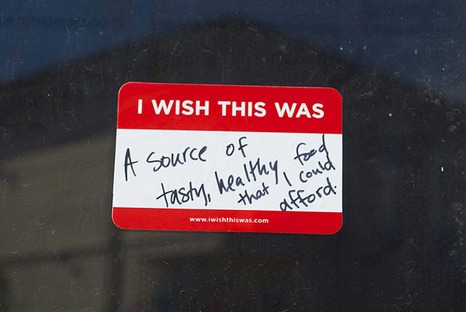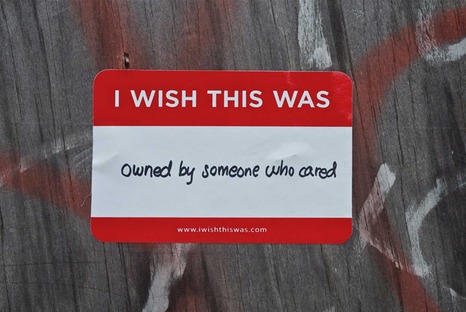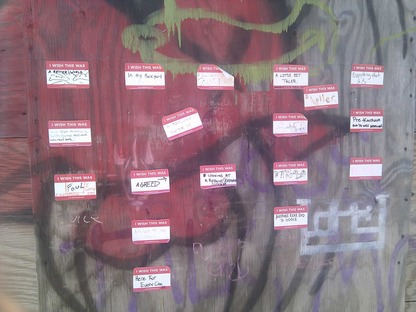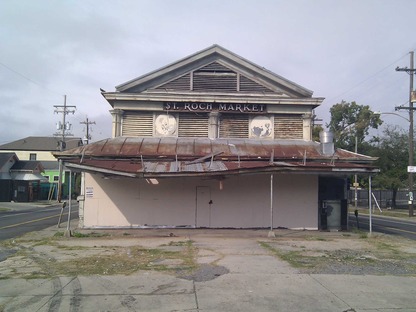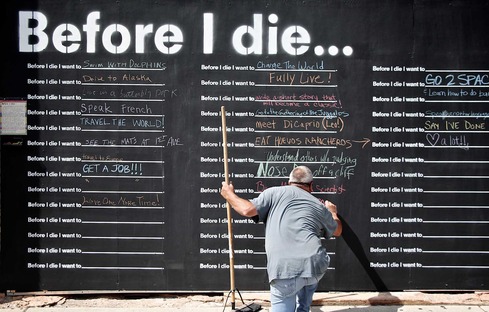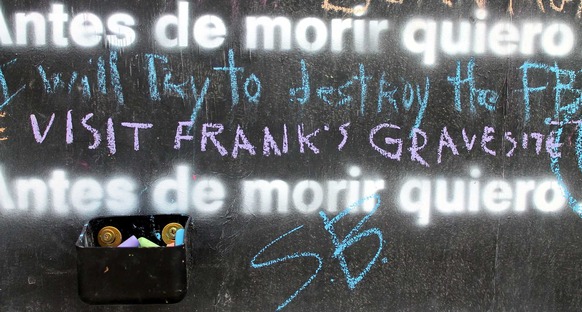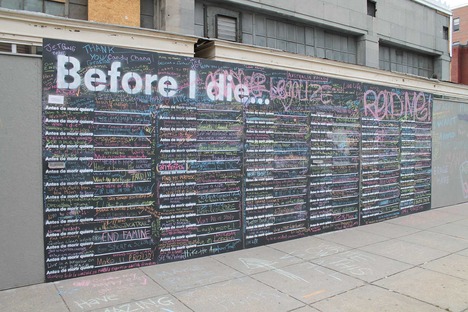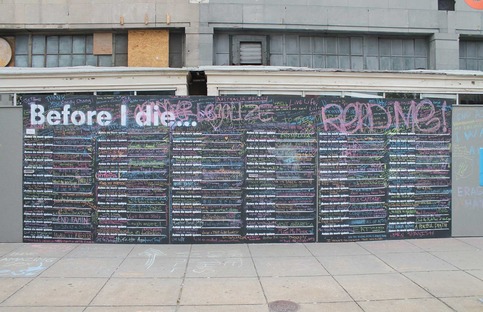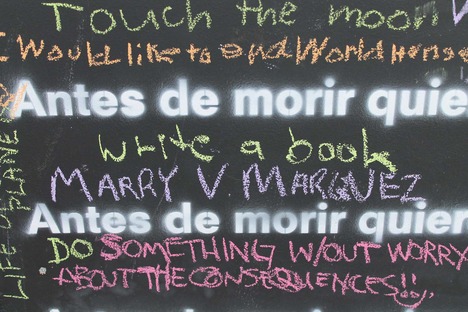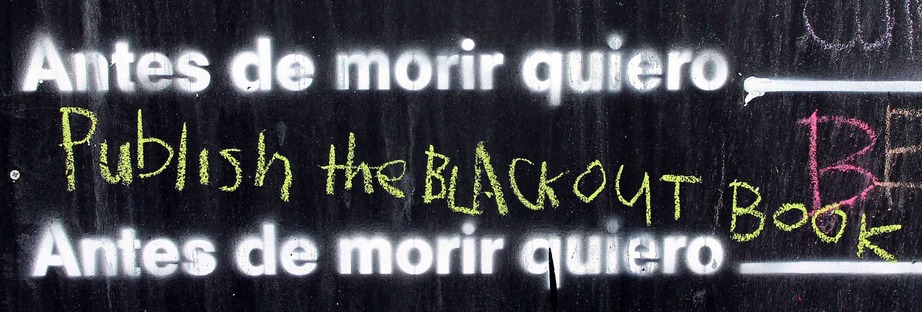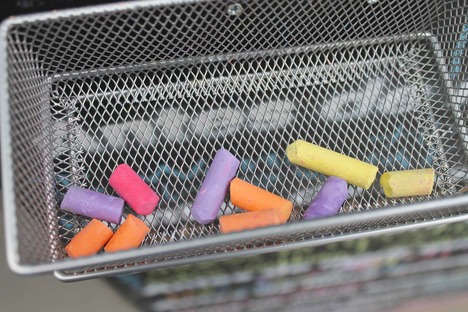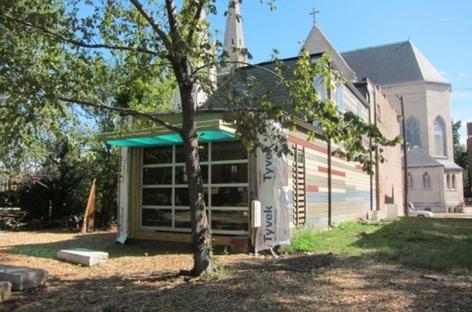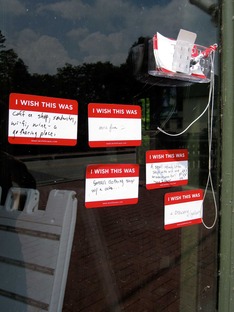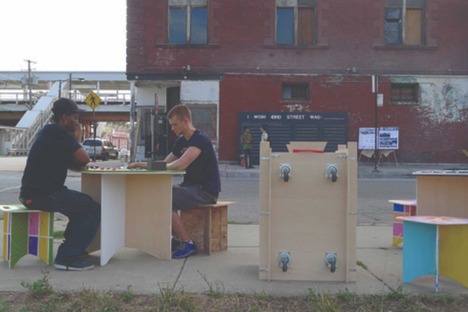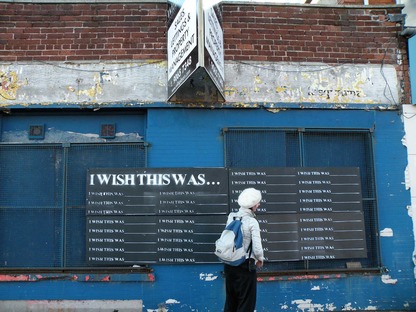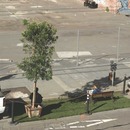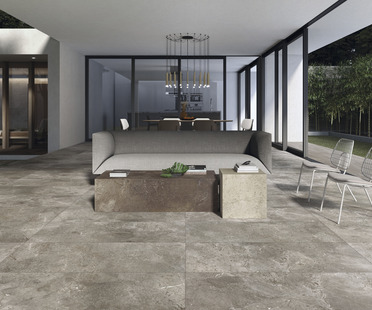 The ambition of reaching an ideal city is improbable but, as underlined by the commission responsible for the exhibition presented by the American Pavilion in 2012, on the occasion of the 13th International Venice Architecture Biennale, a combination of optimism and not only know-how, an effective participatory involvement, a lot of activism and desire to realize something could help to get closer to that sustainable, happy and healthy urban existence that we all hope. To ‘Common Ground’, general theme proposed by David Chipperfield, resounds as an echo 'Spontaneous Interventions: Design Actions for the Common Good', a series of projects that contemplate different ways to improve participation, equity and the right to the city. Do-it-yourself urban planning movement, guerrilla, informal and tactical, interventions that make use of light touches and minimal economic investments are all part of a unique strategy to transform the contemporary metropolitan context into a more accessible and shared environment, they constitute many small actions which, despite their simplicity, can become a driving force and promote collaboration.
The ambition of reaching an ideal city is improbable but, as underlined by the commission responsible for the exhibition presented by the American Pavilion in 2012, on the occasion of the 13th International Venice Architecture Biennale, a combination of optimism and not only know-how, an effective participatory involvement, a lot of activism and desire to realize something could help to get closer to that sustainable, happy and healthy urban existence that we all hope. To ‘Common Ground’, general theme proposed by David Chipperfield, resounds as an echo 'Spontaneous Interventions: Design Actions for the Common Good', a series of projects that contemplate different ways to improve participation, equity and the right to the city. Do-it-yourself urban planning movement, guerrilla, informal and tactical, interventions that make use of light touches and minimal economic investments are all part of a unique strategy to transform the contemporary metropolitan context into a more accessible and shared environment, they constitute many small actions which, despite their simplicity, can become a driving force and promote collaboration.The artists, in particular, with their distinctive sensitivity and great dose of creativity, have often utilized walls and streets of the city by spreading messages that have provoked indignation or simply a reflection, but have nevertheless helped to develop a social awareness and a greater responsibility towards situations of malaise and uneasiness afflicting a part of the community. Introducing the collection of 124 works selected, animated by the aspiration to physically materialize some collective desire for a better life, rethinking and remodelling what a top-down planning has neglected or inadequately proposed, Michael Sorkin, member of the curatorial committee, celebrating the importance of these processes, expression of a vital right, extrapolates a quote from 'The Magna Carta Manifesto' by Peter Linebaugh. The passage describes how public space is nominally made a real common good, as a creation of "people expressing a form of life to support their autonomy and their subsistence needs", a key moment in the history of democracy, to be protected with awareness of the crucial importance it represents. Experiences, experiments and provocations of different actors, activists and artists, who deal with so much imagination how urban life could become, expand the research eliminating the boundaries between "possible-impossible", credited in their "experimental utopias" by the importance that Henri Lefebvre emphasized and reserved to the realization of the possible through the struggle for what seems impossible, as a first step to acquire rights on the city.

This is the case of a dilapidated multi-family building that a parishioner decided to donate, after having attended a series of lessons on the conditions for a healthy community, given to the students of the Most Holy Trinity Catholic School and Academy in St. Louis, Missouri, by a talented artist, Theaster Gates, founder of Rebuild Foundation, a non-profit organization, run with the intent to disseminate free art programs. ‘1415', house number and title assigned to the project, saw, thanks to many volunteers, the renovation of the building into an art center, dedicated to provide those cultural needs absent in the neighborhood: a theatrical space, art courses, workshops and residences for artists. The perspective of helping communities through artistic-cultural support, seeking, in Gates' words, 'to create the right pre-conditions for art to happen alongside other things', often in apparently impossible conditions, is a way to instill and to cultivate trust within the communities, a generous commitment that can "reverse the trends of social and economic fragmentation in cities and neighborhoods".
Talking about artistic action that stimulates participatory involvement, inviting the community to actively contribute to a different future of their own town, among the countless attempts there is one that, although conceived and organized with limited economic means and elementary simplicity, has activated a strong adhesion. "I wish this was ___", with the final empty space to be completed, is the campaign conceived by the artist Candy Chang, an idea that with thousands of stickers and indelible markers, made available for free, in 2010 started a real conversation between the citizens and the city, addressing all the residents of New Orleans an invitation to share aspirations and hopes they nurtured about the numerous empty buildings. The civic stimulus was welcomed with a chorality that proved an extreme interest in the destiny of these vacant edifices: everyone, unexpectedly invested with this decision-making authority, exploited his role with an amazing versatility by demonstrating a spontaneous, sincere involvement in the destiny of his own urban reality. The answers surprise with particularly poetic expressions alternating with other more essential: "I wish it were ___", with just four words, gives rise to a lot of vivacity and desire for interaction and what surprises with great pleasure is that the experiment did not end in New Orleans but is continuing in other cities of America. Graphic designer, guerrilla artist and urban planner, Chang finds a correlation between Internet and public spaces, which she would like to transform into a "common good of information". Convinced that a neighborhood cannot function unless known in depth and continuously updated and modified in order to meet the needs of individuals, she strives to help express this multifaceted chorality, indispensable for a better quality of life.
The urge for a debate on the future of the neighborhood inspires other urban activators, including architect Monica Chadha and her students at the Illinois Institute of Technology. Identified several vacant lots at the intersection of two streets in Bronzeville, a quarter of Chicago, a flourishing center of African-American culture, fallen into a sad economic decline and in a state of neglect in the early 1900s, they work to provoke a sort of rebirth. With the contribution of residents and entrepreneurs, they carry out a research on the community’s needs and in the vacant buildings they organize some light and portable furniture, for satisfying moments of entertainment, from games to the most varied activities, and a Candy Chang-style community bulletin board, as a provocative solicitation for a necessary exchange of ideas, suggestions about a tomorrow not to be left to languish but rather encouraged to regain vitality and opportunities. 'Placemaking in Bronzeville' creates a meeting place, a pole of interaction that hopes to inspire long-term activation.
Monica Chadha, who has always been involved in participatory architecture, intended as a means to promote fair and quality environments for all, has managed after years of commitment and support to create 'Civic Projects', an architecture studio based in Chicago, a multidisciplinary practice that, in an effort to strengthen and invigorate neighborhoods and communities, works closely with customers and local organizations, concerned with expanding the impact of architecture beyond the building, space or product. It is in India in 1996 that she first approached this type of practice with a strong interest in social benefits, when, as an associate researcher at the Office of Balkrishna Doshi, she dedicated herself to the development of housing prototypes for low-income communities. From that experience, others followed as at Studio Gang and Ross Barney Architects that will see her play an important role in the design of award-winning civic buildings and launch, among the various initiatives, in 2011 'Impact Detroit', a collective hub that will bring together skills, interdisciplinary experiences of professionals, local organizations and community stakeholders with the intention of collaborating for the implementation of local projects.
All these idealistic dreamers, ecologists, social animators or simply volunteers, with the destiny of their own town at heart, have traced with passion and enthusiasm paths that will perhaps see a lot of affluence or will perhaps remain deserted. But even so, why not give it a try? Any act aimed at implementing a change will in any case have some repercussions both on a social and environmental level. They might seem acts without deep roots, improvised and not destined to mature but they could also inject and restore confidence in the importance of the social project. It is the spirit that I believe was recognized and awarded with a special mention by the international jury of the Biennale, which praised this project for its "celebration of the power of individuals to change society".
Virginia Cucchi
Credits:
Candy Chang, "I wish this was", Photo Flickr CC/Jason McDermott
Candy Chang, "before i die", Photo Flickr CC/Elvert Barnes
Theaster Gates and Rebuild Foundation, '1415', Photo Rebuild Foundation/ archive FN















